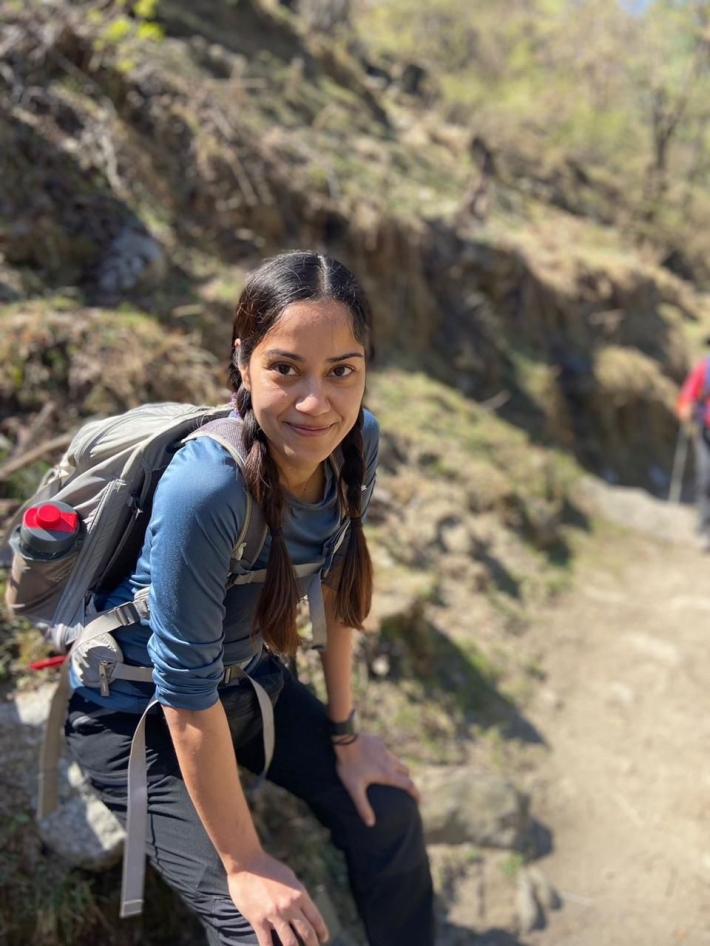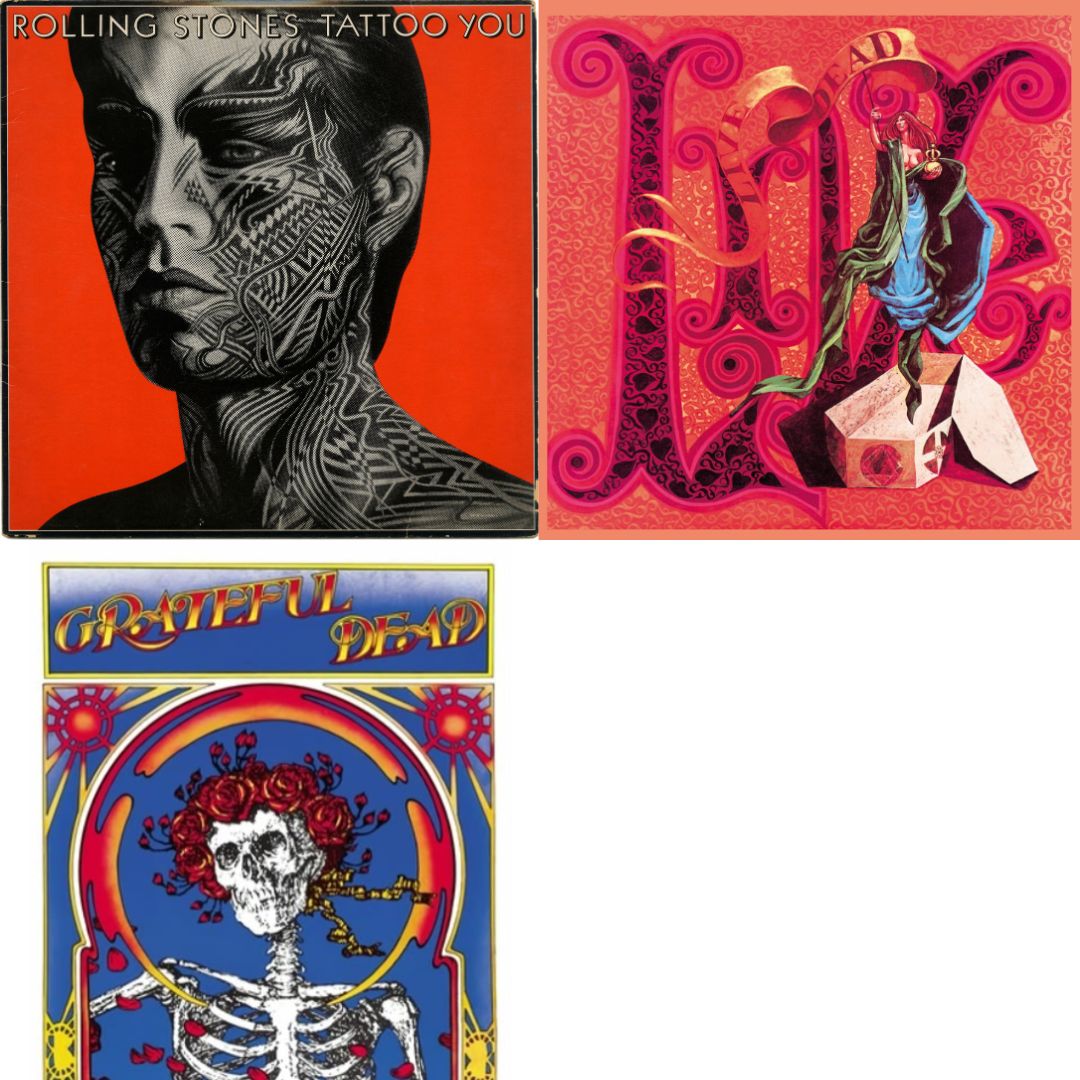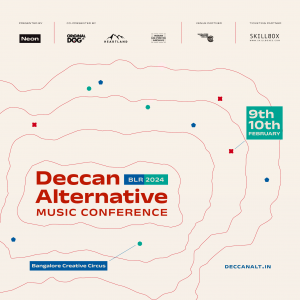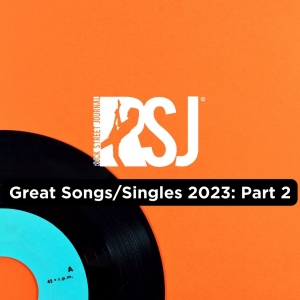

Independent music (and actually music culture in general) sometimes has this ‘problem’ where its consumers think of an artist or a band as only the one person or four-five people who write and perform a piece of music. Even creative people on a small scale have other collaborators who are needed for a song or album to come out. There are people at the studio who will engineer recordings, mix and master, and then there are those who will maybe help put an artist in an event or a live gig to help promote things, and of course, there are the artists who will make album art.
On a large scale, all of this is handled by teams, and Mrinalini Sen was part of a trio that did the album art for Shakti’s Grammy-winning album ‘This Moment’. The visual identity of an album like this is pretty important, so we spoke to her about it. And as it turned out, it was quite the wide-ranging conversation.
Firstly, what has been your relationship with art and album art since, say, childhood?
I’ve always grown up around art – my father is an artist and a printmaker, so I learnt through him in a sense. I never thought of art as a formal career as such either; I’ve always just enjoyed doing it. I’ve had not just family but also many friends who make art and music… being in this sort of environment was where the seed was planted, so to speak. So I didn’t really gravitate towards things that were marketable or ‘career-oriented’, because I just enjoyed making what I make. I like pen and paper, I like the older-school media, and I never really leant into the digital format.
Making album art for music was similar, it was just being around musicians. I used to manage The Supersonics back in the day; I met them when I was 18 at a very formative period in my life. I was taken by the artistic process and the whole scene and everything… Urmi Bhanja (who also made the art for ‘This Moment’) was doing art for this band, and she’s actually been a big influence on me. She’s got this really wicked aesthetic, and a lot of knowledge; I got a very close view of that. Later, Orko Basu too (also worked on ‘This Moment’)… they are all music heads; they’re obsessed with it. This was the beginning of me getting familiar with this whole world, this culture around collecting art, loving art, searching for interesting and obscure stuff… all that.
Speaking of pen and paper, are you the kind of artist who has a set of tools that you preserve and have used for ages, or would you say you enjoy trying out new tools and technology?
Definitely the former. I love making things with my hands… I like the texture of different kinds of paper, I like drawing with different types of media and so on. Recently I’ve been getting into lino-cut printing (I inherited my dad’s tools). So I’m definitely in that category.
I also do think that there is a lot of credit, however, to be given to artists who adapt and adopt new things. It’s always a changing world, and the change in how art is consumed is absolutely huge as compared to a while ago! Galleries do exist still, sure, but there’s a whole different side to it, and I have a great appreciation for artists now who make art for now; art has always been around to be accessible and to make people feel something.
.png)
So, to get into the Shakti album work - there are many people that don’t understand how a design process for album art works. Sometimes there’s a brief, and sometimes there isn’t. Sometimes pointers and instructions are super detailed and sometimes they aren’t. What was the structure in this case? And how did the band contact you all to do it?
The way I got this was through Orko who along with us runs a company called Togetherly that many people are part of. He knows John McLaughlin’s manager, and we were on a call where Urmi said this Shakti project might be a good fit for my art style - and we all draw, so…
With respect to the brief, I would say that we were extremely lucky in this regard. Firstly, well, they’re Shakti - we’ve all heard them before and they’re one of the great fusion bands ever, so we knew their music very well. The next fortunate thing is that we were given complete creative control on this. The brief was to make sense of the music, to have the art be harmony with the music, and the rest of it was put in our hands. This was amazing because they supported us right at the beginning by saying things like time and making costs were not important, and the objective was just to bring the music to life as best as possible.
Orko had this concept that he presented to the band that they really liked, which was this idea of East meeting the West, a bridge in the middle, the moon, the eyes stretching out… their music is so transcendental, of course, so they liked this. Then, they gave us the freedom to execute it, and they gave us time. We worked on this for one year. We should also not forget that people like John McLaughlin, Zakir Hussain and so on come from a time when making album art was a big deal, so they definitely understood the importance of it and let us do our thing.
And then, there’s the fact that this is Shakti’s first album in 46 years, and that they were going to tour the world after it released… so we knew the magnitude of the job. We did so much research, we discussed every little element over and over again; I couldn’t tell you, for example, how long I spent just drawing eyes. All of July and August of the year were just me drawing eyes to the point where I was dreaming about them.
With respect to research, we knew we liked psychedelic art, and we knew it would work with Shakti’s sound. But then we needed to have the Eastern influence, so we were looking at Islamic art and Buddhist thangkas… and then we decided we’d work somewhere in the middle. After that, we fixed on the elements; we knew we wanted lotuses, we decided on the moon, the eyes, and everything else that ended up on the cover. Once we’d figured that out, I spent time beginning to draw different variations and styles of every single little thing; petals, slopes of the hills, everything (this went back and forth for months). I remember working continuously to meet deadlines and so on - this is definitely a tedious process, but we did not want to compromise. Then we spoke about colours, and printing, and that took another few months, and the band was giving us feedback the whole time… purple and gold ended up working on all fronts.
We took so many risks and decisions just trusting in the process, and the fact that we were supported throughout the process was so, so important. Doing this kind of thing takes time.
Well, since the Grammy happened and the album’s come out, and now that there’s a world tour, album art is interesting in that a huge number of people are seeing this every day, multiple times. Do you ever think about things like that?
I don’t really think about reach that much. It is unbelievable that we were written into their musical journey, and to be a part of something this monumental. However, the idea of it reaching people was not something we were really thinking about… we were just focusing on the job. Our objective was do good work, and the ability to just forget everything else and just craft a thing is one I admire and also have absorbed.
Also, once you’re done making a piece of art and ‘let it go’ in a sense, that’s sort of a sense of closure, and you’re looking forward to what you’re going to make next.
Is there any interesting album art that sticks out to you from your memory that you enjoy?
.jpg)

Albums pictured (in order)
Jerry Garcia Band - Cats Under The Stars
The Beatles - Revolver
Bob Dylan - Planet Waves
Fleetwood Mac - Rumours
The Rolling Stones - Tattoo You
Grateful Dead - Live/Dead
Grateful Dead - Grateful Dead (Skull And Bones)
Previous Article The (Actually Potentially Useful) Deccan Alternative Music Conference Kicks Off This Week The (Actually Potentially Useful) Deccan Alternative Music Conference Kicks Off This Week
|
Next Article Them Clones Returns (In A Sense) Them Clones Returns (In A Sense)
|
The wide-ranging conference is a legitimately coherent effort to give this kind of event real meaning
Let’s start with a much-needed discussion on why we, and you, are functioning parts of Indian indie.






Leave a comment